Estimates based on the strength, size, and shape of the Atlantic razor clam (Ensis directus) indicate that the animal’s burrow depth should be physically limited to a few centimeters; yet razor clams can dig as deep as 70 cm. By measuring soil deformations around burrowing E. directus, […]
Polyetheretherketone (PEEK) is a promising implant material because of its excellent mechanical characteristics. Although this polymer is a standard material in spinal applications, PEEK is not in use in the manufacturing of dental implants, where titanium is still the most-used material. This may be caused by its relative bio-inertness. By the use of various surface […]
Pharmaceutical developments and discoveries in medicine has been on the rise this last decade. The rise of synthesis of iron oxide nanoparticles for biomedical applications. Bone defects are occurring at an increasing rate with several deformative causes. Current “gold standard” treatments are influenced by our bodies’ lack […]
Creating an adhesive that can bond together bones has long presented researchers with some sticky problems. Many glues will not adhere to slick, wet surfaces, and those that do still tend to dissolve into the surrounding liquid. When setting shattered bones, surgeons instead must turn to metal screws and plates, a […]
Paper, Flapping-wing micro air vehicles
This connection is the product of research and experiment on flapping-wing micro-air vehicles. The paper provides evidence of flapping-wing propulsion as a desirable method of flight for micro-air vehicles and backs up their claims with the concept of natural selection. It goes on to explain their prototype inspired by biology. Then, […]
“The present article shows the development of a gripper for general purposes with grasping and holding capabilities enabled by a simple control scheme. This objective has been reached exploiting the combination of soft materials, underactuated mechanisms, and a bioinspired design. The development of […]
Technological developments in healthcare have been at the center of focus during last decade. The rise of Nano therapeutic platforms has seen recent advancements in combating deadly diseases like cancer. A lot of research is already done on nanotechnology systems like liposomes, Nano emulsions, dendrimers and micelles, and recently carbon nanotubes […]
Design and bio-applications of biological metal-organic frameworks
Abstract: “Biological metal-organic frameworks (bioMOFs) are a new subclass of the MOF family. In comparison with traditional MOFs, the bioMOFs are made of multifunctional biologically related ligands (bio-ligand) and metal ions. The bio-ligands confer biological compatibility for traditional MOFs, thus providing many opportunities for a wide array of biological applications. This […]
Paper, Bio-inspired jumping robot Salto-1P
Most robots use wheels for movement, with newer bio-inspired ones trying to accomplish bipedalism. Salto-1P, a robot built in Berkeley’s Biomimetics lab, was inspired by saltatorial animals. Its one unique leg, modeled after the galago, instantaneously uses up stored energy to perform a string of jumps. Its jumping locomotion allows it to travel across complex […]
Researchers at Harvard are developing bio-inspired neural probes. Current probes are inflexible and foreign to the brain’s environment, so they lead to neuroinflammatory responses, loss of neurons, and measurement instabilities. The researchers developed electronics with a soma, neurite, and thin polymer insulation that acted like a myelin […]
Scientists have been fascinated by geckos’ abilities to cling onto countless surfaces. After years of research, certain attributes of their biological compositions have led scientists to pinpoint how geckos achieve this remarkable feat. Now, scientists are working to develop “surface architectures that could improve the safety and reliability of tires.” It is fascinating how nature […]
Paper Abstract: “Snorkelers in mangrove forest waters inhabited by the upside-down jellyfish Cassiopea xamachana report discomfort due to a sensation known as stinging water, the cause of which is unknown. Using a combination of histology, microscopy, microfluidics, videography, molecular biology, and mass spectrometry-based proteomics, we describe C. xamachana stinging-cell structures that […]
Mission performance for small aircraft is often dependent on the turn radius. Various biologically inspired concepts have demonstrated that performance can be improved by morphing the wings in a manner similar to birds and bats; however, the morphing of the vertical tail has received less attention since neither birds nor bats […]
Paper, On the Strength of Hair across Species
Hair has diverse functions and is vital in protecting various mammals. The hair structure is different for various mammals; for some animals like the javelina, hair is raised when it is in danger and becomes extra stiff whereas for others like the capybara […]
Paper, Bio-inspired variable structural color materials
Natural structural color materials, especially those that can undergo reversible changes, are attracting increasing interest in a wide variety of research fields. Inspired by the natural creatures, many elaborately nanostructured photonic materials with variable structural colors were developed. These materials have found important applications in switches, display devices, sensors, and so […]
MBARI, Moss Landing (California)
The Monterey Bay Aquarium Research Institute (MBARI) is a private, non-profit oceanographic research center in Moss Landing, California. At MBARI, scientists and engineers work together to develop new tools and methods for studying the ocean. MBARI’s 2020 Summer internship is open to undergraduate and graduate students and educators. The program is […]
Abstract: “The nanopattern on the surface of Clanger cicada wings show the first example of a new class of biomaterials that can kill bacteria on contact based solely on their physical surface structure. The wings provide a model for the development of functional surfaces that possess increased resistance to bacterial contamination […]
The lecture video investigating the denticles on whale fins has displayed the possible uses of denticles to increase the aerodynamics of engineering systems that move through fluids. This study parallels the study on whale denticles with sharks and an algorithmic driven design process to discover the superior […]
News, Eco-friendly way to stop mosquitoes
University of New Mexico scientists have discovered that injecting orange oil into ordinary baker’s yeast kills mosquito larvae. Essential oils from plants like orange oil have known insecticidal properties. This property, along with the fact that mosquitoes gravitate towards yeast, allowed scientists to create a natural and eco-friendly way to repel mosquitoes. Currently their method […]
BioInspiration Hallmark Research Initiative, University of Melbourne
The BioInspiration Hallmark Research Initiative at the University of Melbourne is an initiative that engages and forms partnerships between different academic disciplines and industry to create real-world solutions inspired by nature. Researchers at the University of Melbourne’s Faculty of Sciences (BioSciences, Chemistry, and […]
The animal and plant worlds have inspired scientists for ages, and scientists have long been interested in why certain organisms are resilient to impact. Think of a woodpecker’s skull and beak, the protective way a fish’s scales overlap, or the thick rind that keeps a falling fruit […]
Organization: Center for Bioinspired Engineering, Cal Tech
The Caltech Center for Bioinspired Engineering develops new approaches to pressing technological challenges in energy, defense, and biomedicine by exploiting engineering solutions found in nature. The Center is organized into concurrent research programs that bring together faculty, staff and students from Aerospace, Bioengineering, Biology, Chemistry, Computing and Mathematical Sciences, and Mechanical […]
Authors Yucheng Tang, Lei Qin, Xiaoning Li, Chee-Meng Chew, Jian Zhu have designed a lightweight aquatic soft robot that mimics the anatomy of frogs, including their muscles and webbed feet to increase thrust and swimming speed. They have employed two dielectric elastomer actuators, which have not been used a lot for […]
Bio Inspired Design JBS Internship
Elegant, efficient wind turbine blades that move like whale fins. Super-strong adhesives that stick and release like barnacles and gecko feet. Every day, innovative new technologies are inspired by the natural world. In this Brandeis Bio-Inspired design summer program, we work with biologists, engineers and artists to explore intriguing life forms […]
Competition: Biomimicry Global Design Challenge, Biomimicry Institute, Global
The Biomimicry Institute invites students and professionals worldwide to participate in the 2020 Biomimicry Global Design Challenge to create viable solutions inspired by nature that address the United Nations Sustainable Development Goals (SDGs). The Challenge aims to mobilize thousands to look to life on our planet as […]
The octopus is an interesting model for the development of soft robotics, due to its high deformability, dexterity and rich behavioral repertoire. To investigate the principles of octopus dexterity, we designed an eight-arm soft robot and evaluated its performance with focused experiments. The OCTOPUS robot presented here is a completely soft […]
Standford Byers Center for Biodesign, CA
At Stanford Biodesign, we bring the world’s most promising minds into our circle to investigate, inspire, and innovate a healthier world for all. We offer a portfolio of educational programs to engage both aspiring and experienced innovators in the important challenge of reinventing health care with the help of technology. Each […]
Paper, Unraveling Hagfish Slime
Hagfish produce a slime composed of fibrous threads coiled into skeins, which can be unraveled at fast speeds to defend against predators. This study explores the mechanics behind the unraveling of the skeins by modeling the reaction under various physiological and external conditions. Combined with previous knowledge […]
Paper, Adhesive Nature and Structure of the Gecko Setae
Geckos are excellent at climbing smooth vertical surfaces and their toes are the key to this phenomenon. Research has found that there are a hundred thousand setae, made of Sub-division of beta-keratin, on the toes. These 30–130 µm long seta contain countless 0.2–0.5 µm spatula-shaped […]
Squishy Robots
MIT engineers desired to create robots that could squeeze through tight spaces and quickly alter their morphology similar to octopi. Using a foam structure in wax, they were able to create a design with a hard outer shell and a soft, pliable surface with the capability of healing. The engineers discovered that 3D printing the […]
Paper, Bioinspired neuron-like electronics
Abstract: As an important application of functional biomaterials, neural probes have contributed substantially to studying the brain. Bioinspired and biomimetic strategies have begun to be applied to the development of neural probes, although these and previous generations of probes have had structural and mechanical dissimilarities from their neuron targets that […]
Deep learning is a machine learning technique that uses multi-layered networks to learn how to do a task. Due to the volume of data and complexity of algorithms in the networks, it is often unclear to humans how exactly artificial intelligence learns. Similar to reinforcement training used with dogs, reinforcement […]
All engineering systems that move through fluids can benefit from a reduction in opposing forces, or drag. As a result, there is a significant focus on finding new ways to improve the lift-to-drag ratios of systems that move through fluids. Nature has proven to be an extremely beneficial source of […]
‘PigeonBot’ brings flying robots closer to real birds
The “PidgeonBot” was created by Stanford researchers by dissecting the biomechanics of the avian morphing mechanism. Through analyzing the skeletal motion of birds, researchers were able to determine that only the emulation of the wrist and finger motion were needed to actuate all 20 primary and […]
News,Biomimetic Architecture: Tree Inspires Support Columns
Structural problems of load on columns led to an analysis of trees. Trees are able to naturally distribute weight through its branches. Which lead to tree inspired columns with branches that are able to hold more weight than regular columns. The column’s branches allow an even […]
Bio-inspired approaches to design smart fabrics
The nature’s intrigue plans to create structures from nano-micro to mesoscale has inspired researchers to design artificial object with novel and extra ordinary properties. Recently, the convergence of biomaterials and polymer advances from nano- to micro-scale with new experimental and computational tools has provided the opportunity to constitute increasingly complex fabrics for the textiles industry. […]
Learn about our two Decals!
 Click here to find out more about our Fall Bioinspired Design Decal and our Spring Bioinspired Design in Action Decal – ALL MAJORS are welcome.
Click here to find out more about our Fall Bioinspired Design Decal and our Spring Bioinspired Design in Action Decal – ALL MAJORS are welcome.Berkeley BioDesign Community
 Click here to learn about the BioD: Bio-Inspired Design @ Berkeley student organization or here to signup for more info.
Click here to learn about the BioD: Bio-Inspired Design @ Berkeley student organization or here to signup for more info.Search
Student Login

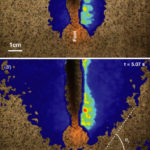
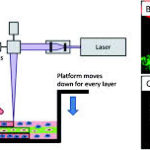
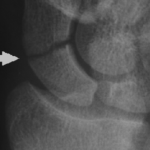
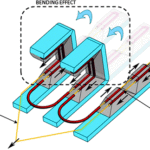
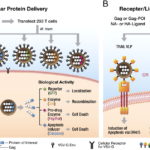
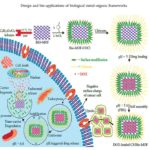
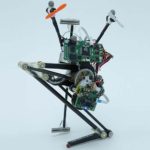
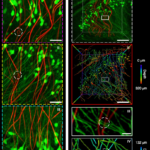
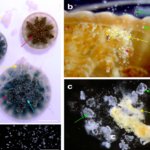
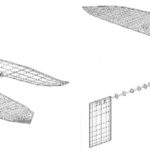
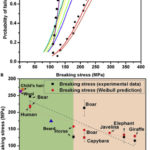
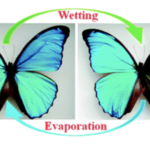
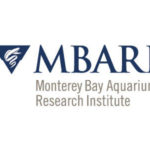
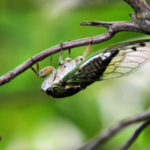
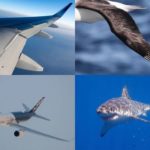
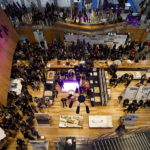
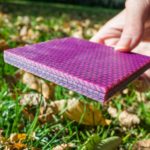
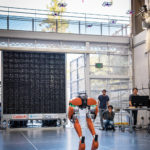
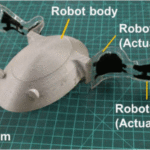
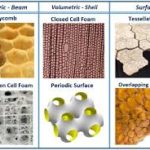
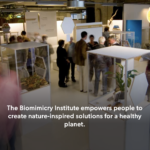
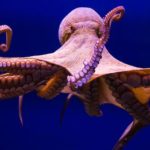
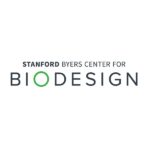
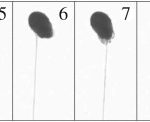
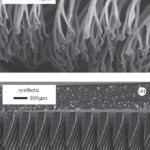
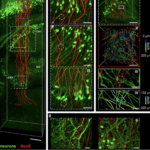
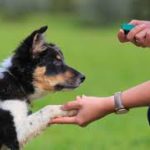
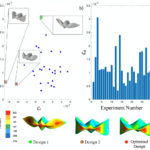
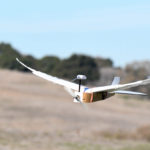
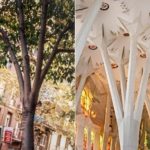


I imagine that the neurological circuits underlying these processes are governed by both 2d spacing maps with their brains as…
to reduce the impact of car accidents, it may be possible to study the force diverting physics of cockroaches to…
you see this type of head-bobbing stability in many avian creatures related to pigeons like chickens. the head ability to…
not like they taught horses how to run! this is an example of convergent evolution where both sea creatures and…
The brain functions in a similar way with neuronal connections. our brains are able to utilize the multiplicity of connections…